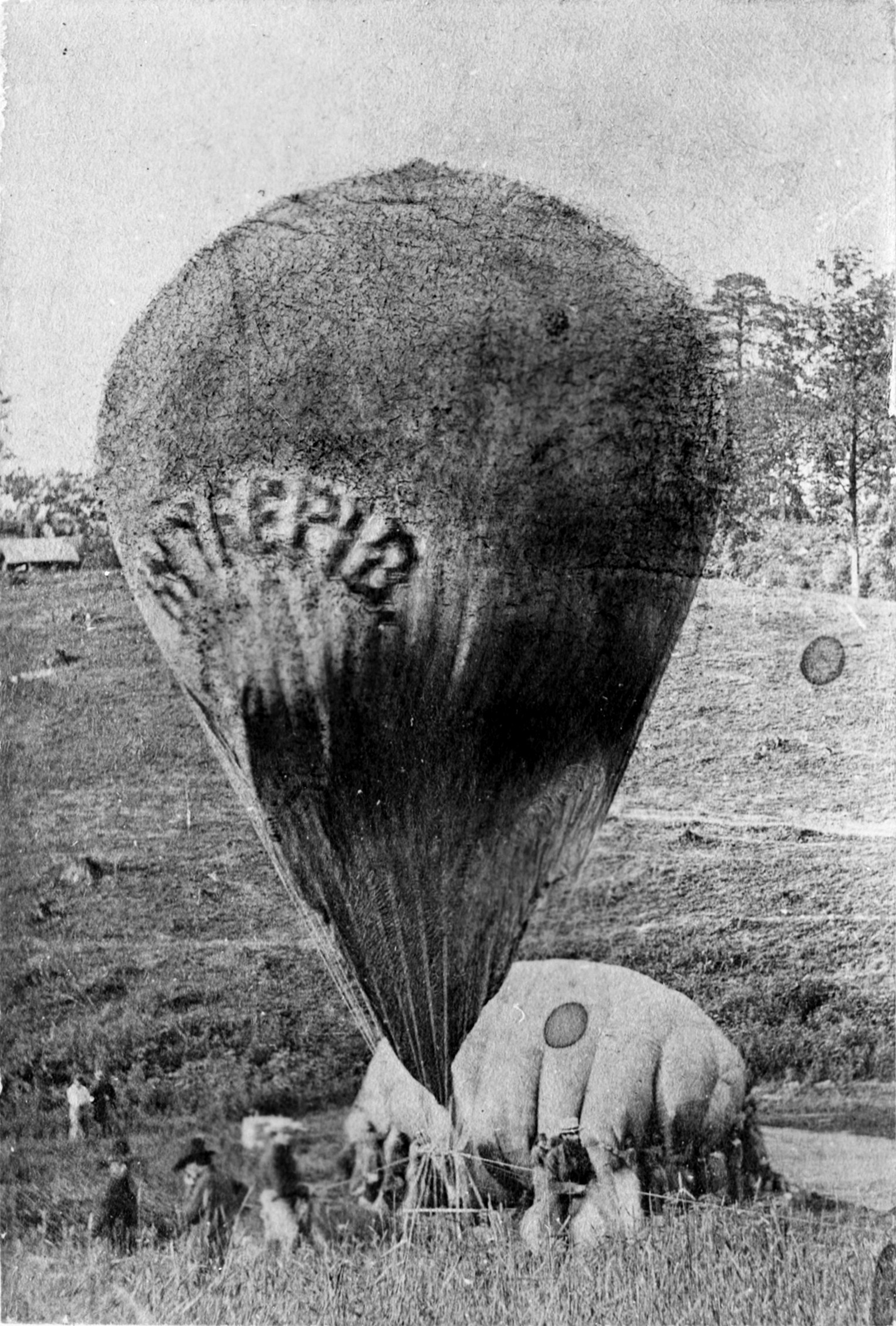 Image via Wikipedia
Image via WikipediaThaddeus Lowe had put his dream of making a transatlantic balloon flight on hold to offer his services to his country. In June 1861, he had demonstrated the military usefulness of his balloon to President Lincoln, then to a group of skeptical generals.
Lowe hoped to become the "chief aeronaut" of a balloon corps dedicated to aerial reconnaissance, but had competition from several other balloonists, including John Wise, John La Mountain, and the Allen brothers, Ezra and James. After his successful demonstrations, he was asked to submit an estimate for the cost of making suitable balloons, but was soon informed that he had been underbid by Wise.
In mid-July, Lowe was conducting experiments on the grounds of the Smithsonian Institution when Captain Amiel Whipple of the U. S. Topographical Engineers sent him a message. General Irvin McDowell was at Centreville, Virginia, and needed a balloon to conduct aerial reconnaissance of the Confederate position at Bull Run. Wise had not shown up. Whipple asked Lowe to bring his balloon down.
Since Lowe did not have a portable hydrogen gas generator it was necessary to inflate the balloon in Washington and tow it south. Lowe was inflating his balloon at a gas main near the Columbian Armory when Wise finally showed up. Lowe was ordered to disconnect his balloon and make way for Wise to inflate his.
Wise inflated his balloon and twenty men from the 26th Pennsylvania began the task of towing the balloon into central Virginia. Along the way, Wise's balloon snagged on a low-hanging tree branch and burst.
Lowe inflated his balloon and started south. He made it as far as Fall Church, where he learned of the Union army's rout at Bull Run. Lowe remained where he was as the retreating army streamed past him. When the last of the Federal pickets withdrew, Lowe started back toward Arlington, dragging his balloon in a heavy rainstorm. He arrived at Fort Corcoran the evening after the battle with the balloon still fully inflated.
Two days later, when the weather finally cleared, Lowe made a free ascent and observed the victorious Rebel army still concentrated around the Manassas area. The news was welcome in Washington, relieving tensions of an expected invasion.
But before Lowe could get the news back to the city, he had a serious misadventure. As he returned to the Union lines, soldiers, thinking Confederates were piloting the craft, began firing on Lowe and demanding that he show his colors. Lowe had no flag to show, so he stayed aloft and finally landed in a grove of trees a couple of miles outside the Union lines. He was discovered by men from the 31st New York Volunteers, but he had twisted his ankle in the landing and could not walk out with them. It was up to his wife to rescue him. She procured a wagon, disguised herself as a farm woman and drove south to pick him up. Lowe and his balloon were hidden in the bottom of the wagon and driven past Confederate pickets at dusk.
Lincoln ordered General-in-Chief Winfield Scott to form a balloon corps with Lowe as chief aeronaut. On August 2, Lowe received his orders and instructions:
HEADQUARTERS DEPARTMENT OF NORTHEASTERN VIRGINIA,Mr. T. S. C. LOWE,
Arlington, August 2, 1861.
Aeronaut:
SIR: You are hereby employed to construct a balloon for military purposes capable of containing at least 25,000 cubic feet of gas, to be made of the best India silk, not inferior to the sample which is divided between us, you retaining a part, with best linen network, and three guys of manilla cordage from 1,200 to 1,500 feet in length. The materials you will purchase immediately, the best the markets afford and at prices not exceeding ordinary rates; and the bills you will forward to me through Maj. Hartman Bache, chief of the Corps of Topographical Engineers. When these materials shall have been collected at Philadelphia, where the balloon is to be constructed, you will report to me, that I may send an officer of the corps to inspect them. You need not, however, wait for the inspecting officer, but go on rapidly with the work, with the understanding that it may be suspended, provided that upon examination the materials or work prove unsatisfactory.
Your compensation from the day of collecting the materials and during the time of making the balloon shall be $5 per day, provided that a reasonable time be allowed for the collection and ten days for making. From and after the day that the balloon shall be ready for inflation at Washington, D.C., your compensation will be $10 per day as long as the Government may require your services.
Inclosed herewith is an order authorizing the purchase of materials necessary for the operation with which you are charged.Very respectfully,
A. W. WHIPPLE,
Captain, Topographical Engineers.[Inclosure.]HEADQUARTERS DEPARTMENT OF NORTHEASTERN VIRGINIA.Mr. T. S. C. Lowe, aeronaut, is hereby authorized to purchase 1,200 yards of best India silk and sufficient linen thread, cordage, &c., for the construction of a balloon, and all reasonable bills for the same, when presented to me through the Bureau of Topographical Engineers, will be paid.A. W. WHIPPLE,
Captain, Topographical Engineers.
Lowe began construction of this new balloon, the Union, and also began assembling and training a group of men in the art of military ballooning. The Union Army Balloon Corps remained a civilian contract organization without military commissions. This put the group in a somewhat precarious situation. If any of the men were ever captured by Confederate troops they could be classified as spies and executed. The Balloon Corps would eventually consist of seven aircraft.
The Union was completed on August 28, and Lowe was ordered to bring it to Fort Corcoran. Because he still did not have a portable gas generator, Lowe was confined to operations near Washington, but the balloon stayed in constant use for almost two months.

No comments:
Post a Comment